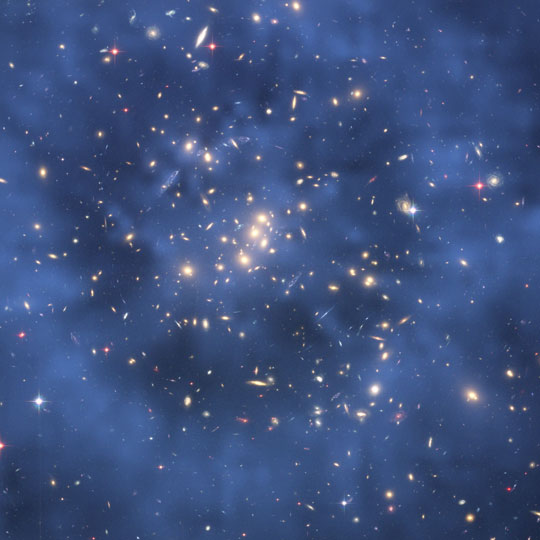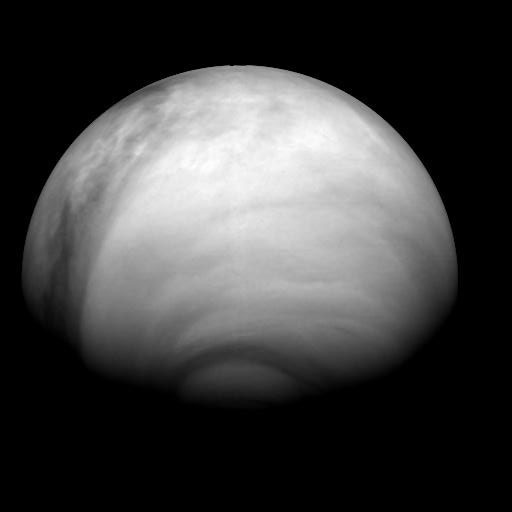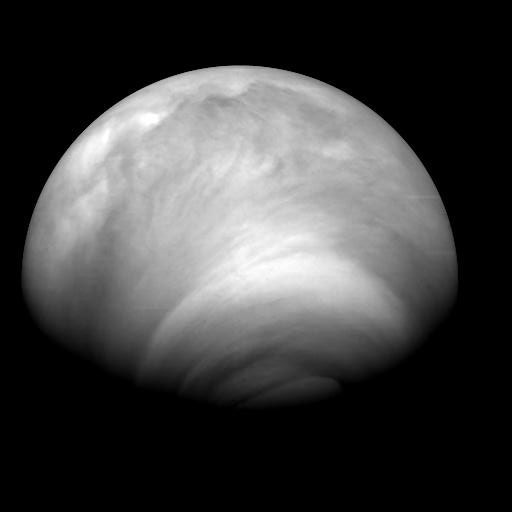Giant Sheets of Dark Matter Detected
 CLICK TO VIEW Cloaked Giants A dark matter ring is seen in a galaxy center. An international team of astronomers peering into the deep Universe said they had mapped the biggest-ever structure of the enigmatic substance known as dark matter. |
The most colossal structures in the universe have been detected by astronomers who tuned into how the structures subtly bend galactic light.
The newfound filaments and sheets of dark matter form a gigantic features stretching across more than 270 million light-years of space--three times larger than any other known structure and 2,000 times the size of our own galaxy.
Because the dark matter, by definition, is invisible to telescopes, the only way to detect it on such grand scales is by surveying huge numbers of distant galaxies and working out how their images, as seen from telescopes, are being weakly tweaked and distorted by any dark matter structures in intervening space.
"We measured the shapes of millions of galaxies and then mapped the stretching of their light," explained astronomer Ludovic Van Waerbeke of the University of British Columbia. The international team from France and Canada studied the galaxies with the Canada-French-Hawaii Telescope Survey's MegaCam telescope in Hawaii.
The resulting map of distorted galaxies reveals the locations of the vast dark matter structures, with more dark matter located where the greatest distortions are seen, he explained. A paper describing the discovery by Van Waerbeke and his colleagues appears in the latest issue of Astronomy and Astrophysics.
The dark matter of the giant structures can distort the appearance of distant galaxies because dark matter has gravity, which can alter the course of light--or "lense" it--as it flies through space. So although the galaxies themselves are not affected, their images are distorted as seen from Earth when their light passes near significant concentrations of dark matter. The distortion is very small, on the order of 0.1 percent.
It's sort of like there were vast strings or sheets of glass prisms out there messing up the images of the galaxies, with more distortion corresponding to a greater number of prisms.
"If we were able to see the dark matter from Earth it would be a very complex network of filaments and sheets," Van Waerbeke told Discovery News.
That sort of cobwebby structure matches computer models which predict that the visible matter in the universe--clusters and super clusters of galaxies--are just the small lights in much vaster clusters of dark matter. All of it is expanding and in some places still connected by filaments of dark matter--rather like very stringy Mozzarella cheese pulled from a hot pizza.
"They're picking up these really large filaments," said astronomer Bhuvnesh Jain of the University of Pennsylvania. The filaments are 10 to a 100 times less dense than the clusters where filaments meet and things like galaxies collect, he explained.
The filaments are of special interest to cosmologists studying the early universe because unlike in the clusters of light and dark matter where things have smashed together a lot, the filaments are relics of much earlier times, said Jain.
"The structures that are providing all this action are still forming," Jain said. The filaments contain regular matter as well, he said, but so little that few stars or galaxies can form – thus far in the history of the universe, anyhow.











